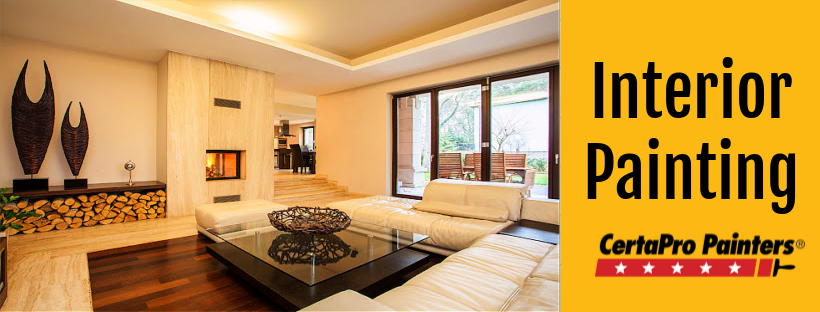
2 Painting Tips for Interior Painting
Posted on June 1, 2022
You have decided to paint the interior of your home. This is a huge task. Like most big improvement projects, home interior painting requires a lot of preparation and planning before even beginning the actual painting process.
But some homeowners get excited. They go out, buy paint, slap it on their walls & then wonder why their project didn’t turn out as well as they expected. Then they have to spend more money repainting and/or hiring professionals to fix their unplanned painting mistakes.
We don’t want you to be one of those non-planning homeowners. If you decide to take on a huge painting project, we want to prepare you with some information to help the interior painting process.
2 factors that can make or break your interior painting project
The Order of Painting
If you are painting an entire room or rooms in your home, the order in which you paint is very important. Even the professional painters using the best paints have drips, splatter and occasional spills. But if you follow the painting order below, it will help keep those problems to a minimum.
Paint ceilings first.
The ceiling of an interior should be painted first, as this is the area where you have the least control. Paint will almost definitely fall on the floor, and a little might even get on the floor; but that won’t matter much as they are going to be painted later.
Paint the trim/woodwork.
Once you’re done with your ceiling it’s time to move onto the trim or woodwork. This is one of the trickiest parts to get right. A huge plus of painting the trim before walls is that you don’t have to worry about a drop or two getting onto the wall. Since it’s not such a problem to have some paint touch the walls, the process is much easier.
Do the “Cut in” Painting around the edges of the walls.
Painting the cut-ins will require patience and attention to detail. If you’re new to this, consider using painter’s tape around all the edges of the room. Then carefully go around the room painting a 5 to 6 inch outline around the walls.
Floors are always last.
If you are planning to paint your floors, start in a corner diagonally opposite the room exit. Paint a 2-inch wide strip on the floor where it meets the wall or trim. Using a roller with an extension pole or a wide brush, start in a corner and work across the short side to maintain a wet edge.
2. Choosing the Correct Tools
One of the most significant factors that will affect your painting outcome—for better or for worse—will be the brush or roller cover you choose. The wrong brush will doom your efforts, leading to wasted paint & time and then frustration with the end result.
With the right implement in your hand, every part of the work will go more smoothly and the chances of the end result looking professional will be greatly increased.
Natural bristle brushes are more costly than man made fiber brushes and are best used for wood stain, varnish, and all urethane-, enamel- and oil-based paints. Synthetic fiber bristles are the best choice for modern acrylic, latex, and alkyd paints.
Inexpensive foam brushes are used for quick projects—touchup, for example—and are usually not worth the time it takes to properly clean them.
Therefore they are also a good choice for small projects for which you would otherwise use an expensive natural bristle brush. Another good use for foam brushers is applying test patches of paint—in fact, if you purchase a pot of test paint, buy a few foam brushes at the same time as you will then save time but not having to clean a brush you only used for a few minutes.
Conclusion
These may seem like two small, unimportant things to pay attention to when planning your interior painting project but they are actually imperative to the success of your project. The small details that professional painters know and utilize every day on their projects.
When you’re ready to start your home interior painting project give CertaPro of East York a call at 416-770-1758 or schedule a free estimate online today!”





